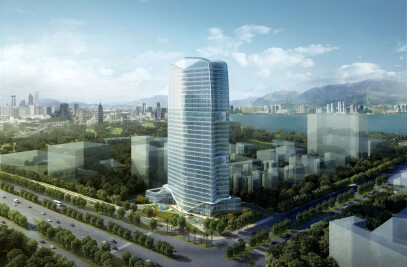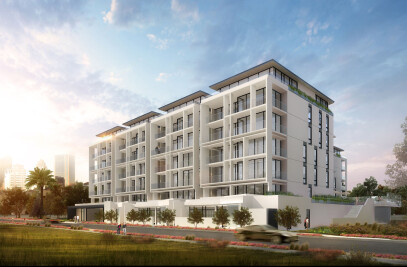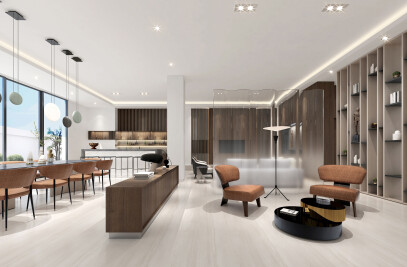Skolkovo Innovation Centre is a strategic initiative endorsed by the Russian Government to create a research and innovation hub focused upon diversifying the economy by promoting global innovation in five key areas of focus: IT, Biomedical, Energy Efficiency, Nuclear Science, and Space Technology. The overall masterplan was developed by France's AREP, whilst the specific districts have detailed masterplans prepared by leading international design firms. District D2 features the Technopark functional ensemble, with a supportive urban organization of housing dispersed amongst nature. Various housing types are positioned within circles inscribed in the landscape, creating "islands surrounded by forest".

This proposal focuses on Quartier 1, containing apartment housing blocks, commercial space and two kindergartens. The design strategy respects the District masterplan, and emphasizes direct connections with the landscape and linkages with the surrounding district. Emphasizing community identity, the central urban realm is ringed by public amenities designed to maximize frontage and encourage pedestrian movement. Site circulation includes paths parallel with the ribbon buildings, and also features transverse routes through them. These east/west paths follow an arc echoing the site's circular perimeter, while connecting public zones like kindergartens and gardens. The residential blocks directly follow the masterplan alignment, while the kindergarten's importance is further enhanced - directly engaged with nature through their position and defined circular territory.

With 1100 dwelling units comprising 93,200 sqm and FAR of 2.7, the residential density matches many urban centers. Unique to Skolkovo is the priority to minimize reliance upon privite automobiles, by promoting public circulation and natural environment. An opportunity to create an urban environment directly engaged with nature is presented. The design responds by encouraging unit type variety, varied exposure, and user amenities. Innovative plan arrangement, landscaped light courts and environment design strategies promote natural ventilation and provide units with multiple exposures, avoiding conventional double loaded corridors. Dwellings feature extensive daylighting along with continuous accessible balconies, which respond to climate and privacy. These terraces can be variously enclosed through sliding glass screen walls integrating a screen print image of forest - furthering an architectural dialogue with nature. Seeking LEED Silver certification, the design solution features passive and active strategies to minimize resource consumption during construction, and deliver energy saving performance during the project's lifetime.
International Design Competition - Finalist








































